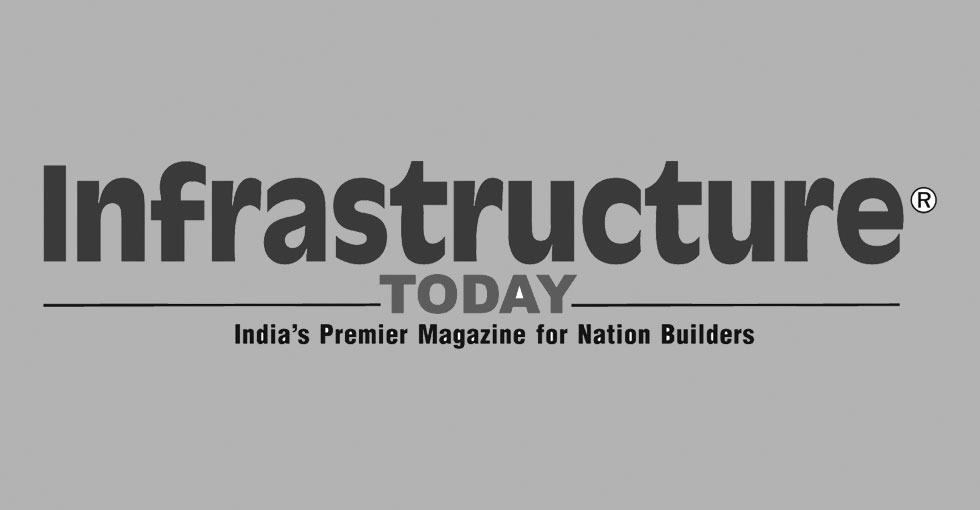Telecom operators associations COAI and AUSPI met senior Finance Ministry officials to seek 'infrastructure' status for the sector, a tag which will make access to credit easier for them.
FlashNews:
India Begins Hydrogen Car Trials as Minister Joshi Drives Toyota Mirai to Parliament
MNRE Refutes Financing Pause; Calls for Expansion into Upstream Solar Manufacturing
IndiGrid to Acquire Gadag Transmission for ₹3.72 Billion
India Launches First All‑Electric Tug at Deendayal Port, Accelerates Green Maritime Shift
Bharatmala Pariyojana Executes 61% of Phase‑I Highway Targets, Boosts Freight Speed and Connectivity
Waaree Tops India’s Solar Module Shipments in Q3 2025, Reinforces Global Competitiveness
AISATS Expands Nationwide, Launches Ground Handling at Cochin Airport with Future‑Ready Tech
TIL Bags ₹2 Billion Orders Across Defence and Logistics, Validates Dual-Sector Strategy
Indian Railways to Roll Out OTP‑Based Tatkal Window Tickets Nationwide to Curb Misuse
Sanchar Saathi Row: Scindia Defends App as Voluntary, Transparent and Consumer‑Protective Amid Privacy Debate
REIAs Issue 67.5 GW Renewable Energy LoAs Since April 2023 with Zero Cancellations: Joshi
Rail Freight Rises 4.2% in November as Steel, Iron Ore and Fertiliser Volumes Surge
NHAI Partners Reliance Jio to Launch Telecom‑Based Safety Alerts on National Highways
Delhi Airport Becomes India’s First Water‑Positive Major Aviation Hub
Civil Aviation Minister Confirms GPS Spoofing at Delhi Airport; Cyber Threats Spread to Major Hubs
India’s Power Capacity Crosses 505,000 MW, Clean Energy Transition Accelerates
Air India Express Launches Twice-Daily Nagpur-Bengaluru Flights, Expands Maharashtra Network
India to Expand Refining Capacity to 309.5 MMTPA by 2030, Accelerates Biofuel and Green Hydrogen Push
Air India Expands China Presence with TAM Group Appointment as Passenger GSA
Tag: investment
Infrascape 2012 | Logistics: Manpower shortage will hit the sector
With GST on the threshold of being implemented and government's interest to bring in investments in e-governance and infrastructure projects through public private partnerships (PPPs), this has been a fairly good year for the logistics industry.
US eyeing Indian infra sector
The US is scouting for a bilateral investment treaty with India eyeing on the huge business opportunities in building India's infrastructure. Given that 80 per cent of the infrastructure of 2030 has yet to be built,
RBI eases IDF norms for NRIs
The Reserve Bank of India (RBI) has decided to allow eligible non-resident investors to invest, on a repatriation basis, in rupee and foreign currency denominated bonds issued by the Infrastructure Debt Funds (IDFs) set up as non-banking financial companies.
$75 bn investment in oil & gas sector in 2012-17
India expects Rs 3.90 trillion ($75 billion) to be invested in its oil and gas sector from April 2012 to March 2017. The development plan incluÂdes exploration, production, reÂfining, marketing, storage,
Fin Min increases FII limit
The Union Ministry of Finance has decided to increase the current limit of Foreign Institutional Investors' (FIIs) investments in government securities by $5 billion raising the cap to $15 billion.
Rs 25,000 cr mega infra projects cleared
The government gave regulatory clearances to three mega infrastructure projects involving an investment of Rs 25,000 crore. These are the first among a few projects the government has shortlisted to be put on a fast track.
Infra Debt Funds: Creating new wealth
IDFs come as a new solution to debt finance to long-term, high-value infrastructure sectors. Eligibility norms for IDFs are rather stringent but justified given the risks and quantums-typical of infrastructure investment-involved.
As economy booms, pressure to cut subsidies will go down
By the end of next year, both projects and financial facilitation for them should reach a stage where it's smooth sailing for infrastructure sectors, if Montek Singh Ahluwalia, Deputy Chairman, Planning Commission of India, has his way.
Infrastructure: New catalyst in the equation
Canada's steady and ongoing investment in India means that the confidence and basic market understanding are pre-eminent among Canadian companies. Jai Mavani explains what the entry points, facilitations and barriers are to invest in India's infrastructure.


